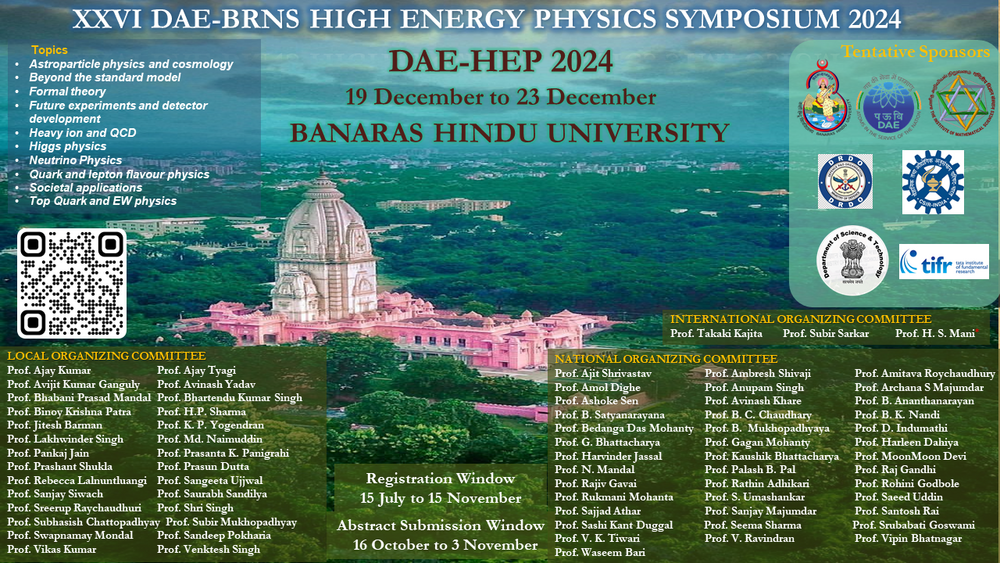Speaker
Description
Abstract: The CMS experiment at CERN is foreseen to receive a substantial upgrade during Long Shutdown-3 (LS3) to handle the large number of pileup events in the High-Luminosity LHC. The objective is to increase the integrated luminosity by a factor of 10 beyond the LHC’s design value. The CMS just commissioned the Gaseous Electron Multiplier (GEM) detector, namely GE1/1, at the endcap during LS2. GEM detectors represent a new addition to the muon system in CMS, in order to complement the existing systems in the endcap, part of CMS most affected by large radiation doses and high event rates. The GEM chambers will provide additional redundancy and measurement points, allowing a better muon track identification and also wider coverage in the very forward region. For Phase-2 upgrades, CMS has outlined plans for further endcap upgrades, such as GE2/1 and ME0, as part of the LS3 upgrade. For GE2/1 detectors, the part of the detector assembly is expected to take place at different production sites including Panjab University, India. Besides assembly, also all QCs will be performed before sending them to CERN for installation. This contribution will describe these Quality control tests (QC1 to QC5), their setups and corresponding results of the triple GEM detector testing.
Summary: Gas Electron Multiplier(GEM) Detector was introduced by F. Sauli in 1997, which is a composite grid consisting of two conducting layers separated by a thin insulator (i.e. Kapton/Apical) etched with a regular matrix of open channels. GEM is the type of Micropattern gaseous detectors (MPGD) which is used to detect and characterize ionizing radiation such as charged particles or photons.The unique aspect of these detectors is the use of micro-patterned structures within the gas volume to facilitate the precise localization of ionization events within the detector. The CMS GEM detectors are made of three layers, each of which is a 50 μm thick copper-clad polyimide foil. These chambers are filled with an Ar/CO2 gas mixture, where incident muons trigger primary ionization, subsequently leading to an electron avalanche that generates an amplified signal for detection. To ensure proper and robust operation of the chambers within their performance specifications once installed in CMS, a detailed Quality Control (QC) procedure is employed in all the production sites, which are equipped with the same laboratory infrastructure and instrumentation. This protocol aims to carefully assess the detector performance at each step.
Quality control (QC) and quality assurance (QA) are key factors to ensure the delivery of fully efficient detectors yielding their best performance when installed in CMS. The final chamber quality and performance depend on the production quality and on the accuracy of the chamber assembly operation, tracking, and documentation. Quality control (QC) testing for gas electron multiplier (GEM) detectors involves a series of checks to verify their functionality and reliability before deployment and QC5 is the one of the checks. First QC1; the detector undergoes a visual inspection to ensure there are no physical defects or damages. Next in QC3; gas leak test is performed to calculate the GEM detector’s gas leak rate or to check gas tightness. And then QC2 to QC4 , electrical tests are performed to check the integrity of the high-voltage connections and the uniformity of the applied electric field. Performance tests QC5; are conducted by exposing the detector to a known radiation source, assessing parameters such as gain, spatial resolution, and efficiency. Additionally, uniformity tests are used to evaluate the detector's response across its entire active area, ensuring consistent performance. In this contribution, I motivate and discuss the quality control procedures that were developed to standardize the performance of the detectors.
| Field of contribution | Experiment |
|---|

